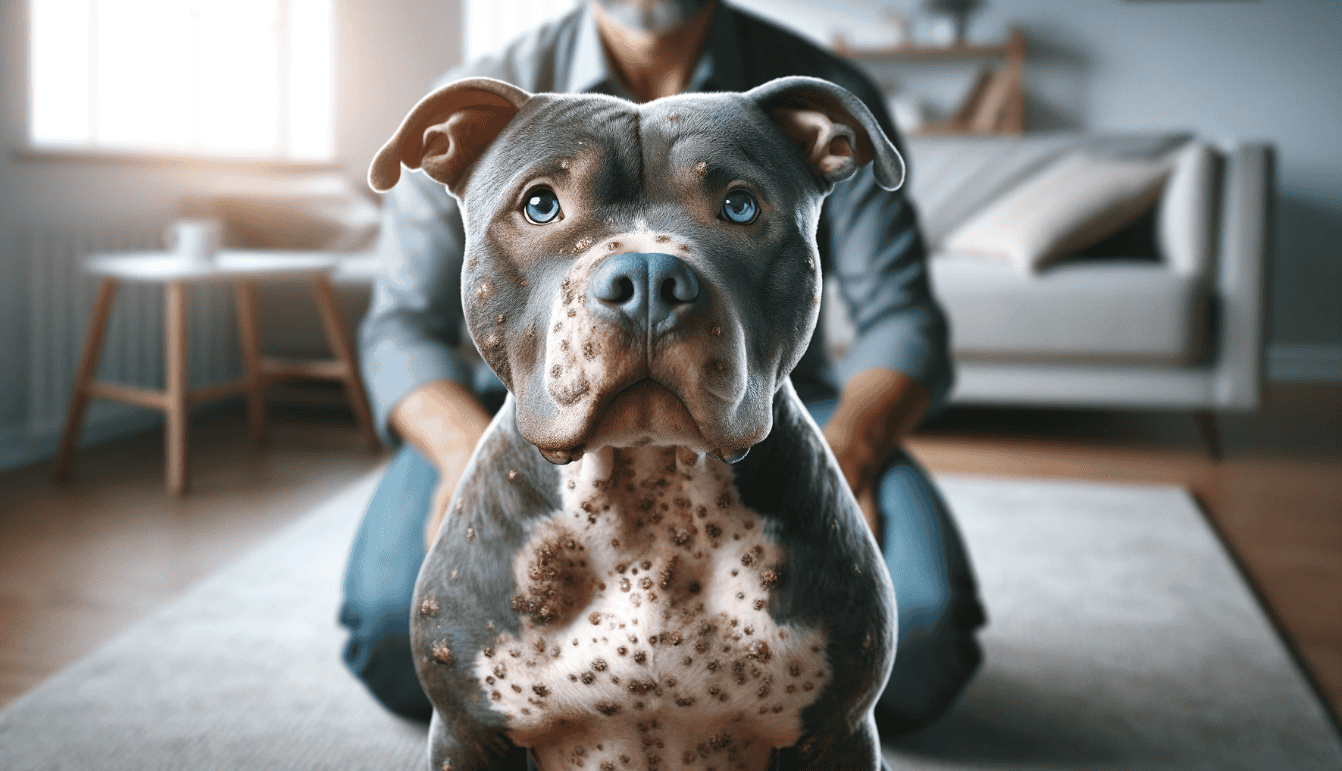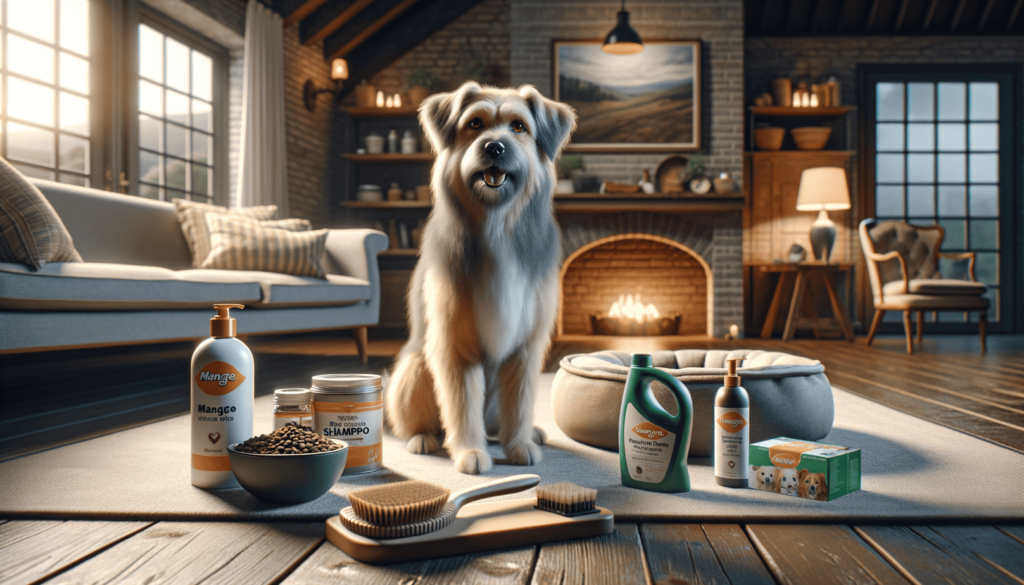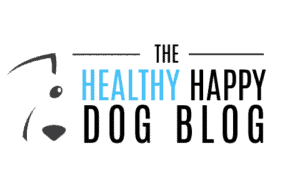As a dedicated dog parent, it’s natural to want to protect your furry friend from all harm, including the dreaded skin condition known as mange. This article will arm you with the knowledge and practical tips on how to prevent mange in dogs. Unpleasant as it may be, mange is a condition that can be prevented with the right proactive measures. From understanding the causes and symptoms of mange to exploring home prevention methods, nutritional approaches, and the importance of regular vet check-ups, we’ll cover it all. So, let’s get started on this journey to ensure your dog stays happy, healthy, and mange-free.

Recognizing the Symptoms of Mange in Dogs
Spotting the signs of mange early on can be the key to preventing this uncomfortable and sometimes debilitating condition in your furry friend. Let’s discuss some of the most common symptoms so you can stay one step ahead.
Physical Signs of Mange in Dogs
Dog mange typically presents itself through various physical signs. You may notice your dog’s skin becoming red, inflamed, or scaly. Hair loss, often in patches, is another common symptom, especially around the elbows, ears, and face. Your dog may also develop sores or lesions due to excessive scratching. Bumps or blisters might appear on the skin, and in severe cases, the skin may darken or become crusty. It is crucial to monitor your dog’s skin regularly, especially if they have been in contact with other dogs who may have had mange.
Behavioral Changes in Dogs with Mange
Alongside physical symptoms, mange can also affect your dog’s behavior. Dogs suffering from mange are likely to scratch or bite their skin excessively due to intense itching, which is a tell-tale sign of this condition. They may also appear restless or agitated, and their sleep patterns might change. If your usually lively and playful pet suddenly becomes lethargic or shows a lack of interest in activities they usually enjoy, it could be a sign of discomfort caused by mange.
It’s essential to remember that these symptoms can also be indicative of other health issues, so it’s crucial to seek veterinary advice if you notice any changes in your dog’s physical condition or behavior. Early detection can not only help alleviate your pet’s discomfort but also prevent the spread of mange to other animals. After all, as a responsible pet parent, your dog’s health and well-being should always be your top priority.
Remember, the key to preventing mange in dogs is staying vigilant about their health, knowing what signs to look for, and seeking prompt veterinary care when needed.
The Importance of Regular Vet Check-ups
As a veterinarian, I cannot stress enough the importance of regular vet check-ups in understanding how to prevent mange in dogs. These visits play a crucial role in preventing mange and other health issues in your furry friend.
The Role of Vet Check-ups in Preventing Mange
Regular vet check-ups allow us to monitor your dog’s overall health and detect any early signs of mange. This is crucial because early detection increases the chances of successful treatment and reduces the risk of severe complications. Here’s how a regular vet check-up can help:
- Early detection: During a check-up, we thoroughly examine your dog’s skin for signs of mange. This helps in early diagnosis and treatment.
- Preventive measures: We can recommend preventive measures such as flea and tick treatments or specific grooming techniques that can help reduce the risk of mange.
- Education: We can provide advice on how to prevent mange in dogs by maintaining a clean environment and providing the right nutrition.
What to Expect During a Vet Check-up for Mange
During a vet check-up, we carry out a comprehensive physical examination of your dog. Here’s what you can expect:
- Skin examination: We will inspect your dog’s skin for signs of redness, itching, hair loss, or lesions, which are common symptoms of mange.
- Microscopic examination: If we suspect mange, we may take a skin scraping for microscopic examination to confirm the presence of mites.
- Discussion: We will discuss your dog’s lifestyle, diet, and environmental factors that may contribute to mange. This will help us provide personalized advice on how to prevent mange in dogs.
Remember, regular vet check-ups are a proactive way to keep your dog healthy and mange-free. So, don’t wait for your dog to show signs of illness before bringing them in for a check-up.
Preventing Mange in Dogs: Proactive Tips
Maintaining a clean environment and utilizing proper grooming techniques can significantly help in preventing mange in dogs. Let’s discuss these preventive measures further.
Maintaining a Clean Environment for Dogs
One of the most effective ways to prevent mange is by keeping your pet’s surroundings clean. This includes areas where your dog spends the majority of their time like their bed, kennel, or favorite spots in the house. Regularly washing your dog’s bedding and toys in hot water can hinder the survival and spread of mites, thus reducing the risk of mange.
- Regular Cleaning: Clean your pet’s living area at least once a week. This includes vacuuming carpets, mopping floors, and washing their bedding.
- Disinfection: Use pet-safe disinfectants to clean surfaces and objects that your dog frequently comes in contact with.
- Outdoor Spaces: If your dog spends a lot of time outdoors, make sure to keep your yard clean and free from debris where mites could potentially thrive.
Proper Grooming Techniques to Prevent Mange
Proper grooming is not just about keeping your dog looking good. It’s also a vital part of mange prevention. Regular baths and brushing can help keep your dog’s skin healthy and free from mites.
- Regular Baths: Bathe your dog regularly using a gentle, hypoallergenic shampoo. This can help remove any mites on their skin and keep their coat healthy.
- Brushing: Brush your dog’s coat daily to remove dead skin cells, dirt, and potential mites. This can also stimulate blood flow to the skin, promoting healthier skin and a shinier coat.
- Professional Grooming: Consider taking your dog to a professional groomer periodically. They have the tools and knowledge to thoroughly clean your dog’s coat and spot any signs of skin issues early on.
Remember, preventing mange in dogs doesn’t have to be complicated. By maintaining a clean environment and practicing proper grooming techniques, you can help keep your furry friend healthy and mange-free.

Nutritional Approaches to Prevent Mange in Dogs
Just like us humans, our furry friends also require a balanced diet to maintain their overall health. When it comes to preventing mange in dogs, nutrition plays a vital role. Let’s explore the essential nutrients for a healthy dog skin and coat, and the recommended dog foods that can help in preventing mange.
Essential Nutrients for a Healthy Dog Skin and Coat
Several nutrients contribute to the health of your dog’s skin and coat, which in turn can help prevent mange. Here are some of the most important ones:
- Protein: Protein is crucial for skin health as it aids in cell repair and regeneration. Foods rich in high-quality proteins like chicken, turkey, fish, and eggs are excellent choices.
- Fatty Acids: Omega-3 and Omega-6 fatty acids help in maintaining the health of your dog’s skin barrier, preventing infections and infestations. Fish oils, flaxseeds, and walnuts are great sources of these fatty acids.
- Vitamins: Vitamins A, E, and B are essential for skin health. They help in cell growth, maintaining skin moisture, and promoting a shiny coat. Foods like carrots, spinach, and sweet potatoes are rich in these vitamins.
- Zinc: This mineral is crucial for skin health as it plays a role in cell division and protein synthesis. Foods like beef, lamb, and pumpkin seeds are high in zinc.
Recommended Dog Foods to Prevent Mange
Feeding your dog a balanced diet rich in the above nutrients can help in preventing mange. Here are some recommended dog foods:
- Blue Buffalo Life Protection Formula: This dog food is rich in high-quality protein and contains Omega-3 and Omega-6 fatty acids, along with a blend of antioxidants, vitamins, and minerals.
- Hill’s Science Diet Skin & Coat: Formulated specifically for skin and coat health, this diet contains optimal levels of Omega-6 fatty acids and other nutrients for a visible difference in your dog’s skin and coat.
- Purina Pro Plan Sensitive Skin & Stomach: This dog food is made with high-quality protein, Omega-6 fatty acids, and vitamin A to promote skin and coat health.
Remember, every dog is unique, and what works for one may not work for another. Therefore, it’s essential to consult with your vet before making any significant changes to your dog’s diet. With the right nutrition, you can play a significant role in how to prevent mange in dogs.
The Role of Parasite Control in Preventing Mange
Parasite control plays a crucial role in preventing mange in dogs. Regular flea and tick treatments are essential to ensure that your furry friend stays healthy and mange-free.
Importance of Regular Flea and Tick Treatments
Many dog parents don’t realize that fleas and ticks can carry the mites that cause mange. Regular treatments can help eliminate these parasites and reduce your dog’s risk of developing mange. Flea and tick treatments work by killing these pests on contact, preventing them from biting your dog and potentially transmitting mites. It’s important to treat your dog year-round, as fleas and ticks can be a problem in any season.
Safe and Effective Parasite Control Products for Dogs
There are numerous safe and effective parasite control products available for dogs. Here are a few that come highly recommended:
- Spot-On Treatments: These are applied directly to your dog’s skin and provide long-lasting protection against fleas and ticks. Some brands also offer protection against mites.
- Oral Medications: These are given by mouth and work by killing fleas and ticks from the inside out. Some oral medications also offer protection against mites.
- Collars: Flea and tick collars provide long-term protection and are a convenient option for many dog parents.
Always consult with your vet before starting any new parasite control regimen. They can recommend the best products for your dog’s specific needs and ensure that they are used safely and effectively.
Remember, preventing mange in dogs isn’t just about dealing with the symptoms once they appear. It’s about taking proactive steps to ensure that your dog stays healthy and happy. Regular parasite control is a key part of this process.

Vaccinations and Their Role in Mange Prevention
Just like us, our four-legged friends also need vaccinations to stay healthy. Vaccinations play a crucial role in preventing a variety of diseases, including mange. They boost the immune system, making it difficult for mites to infest and cause mange.
Necessary Vaccinations for Dogs to Prevent Mange
While no specific vaccine directly prevents mange, some vaccines can strengthen your dog’s immune system, making them less susceptible to mite infestations. Here are some necessary vaccinations that indirectly help in mange prevention:
- Distemper vaccine: Distemper is a highly contagious and deadly disease. The vaccine not only protects against distemper but also strengthens the immune system, which can help in preventing mange.
- Parvovirus vaccine: This vaccine also boosts your dog’s immune system, making it harder for mites to take hold and cause mange.
- Rabies vaccine: Although not directly linked to mange, the rabies vaccine is a vital part of any dog’s vaccination schedule. A robust immune system can fight off mange mites more effectively.
Understanding the Vaccination Schedule for Dogs
Keeping up with your dog’s vaccination schedule is essential in maintaining their overall health and preventing diseases, including mange. Puppies should start their vaccinations at six to eight weeks of age, followed by booster shots every three to four weeks until they’re 16 weeks old. After this, most vaccines are administered annually or every three years, depending on the type of vaccine and your vet’s recommendation.
Remember, a healthy dog is less likely to get mange. So, ensuring your dog gets regular check-ups and stays up-to-date with their vaccinations is a key part of mange prevention.
Always consult with your vet about the best vaccination schedule for your dog. They can provide personalized advice based on your dog’s breed, age, health status, and lifestyle.
When to Seek Professional Help for Canine Mange
As a loving dog parent, it’s essential to know when to seek professional help for your pet’s health issues. With an issue like mange, it can be distressing to see your furry friend suffering. It’s important to understand when home remedies and prevention methods are not enough and when it’s time to seek the help of a vet.
Signs Your Dog’s Mange Needs Professional Attention
If you’ve noticed that your dog’s symptoms are worsening despite your best efforts, it may be time to consult a vet. Signs that your dog’s mange may need professional attention include:
- Severe itching that doesn’t subside with home treatments
- Inflamed, red skin that’s hot to the touch
- Loss of hair in large patches
- Open sores or wounds from scratching
- Changes in behavior such as loss of appetite or lethargy
If your dog is showing any of these signs, it’s crucial to seek professional help immediately. Remember, mange can be a serious condition if left untreated and can lead to more severe health problems.
Finding the Right Vet for Your Dog’s Mange Treatment
Choosing the right vet for your dog’s mange treatment is vital. Look for a vet who specializes in skin conditions or has extensive experience treating mange. They should be able to provide a comprehensive treatment plan that includes medication to kill the mites, treatments to soothe your dog’s skin and relieve itching, and preventative measures to stop the mange from recurring.
Your vet should also provide advice on how to care for your dog at home during treatment, including any changes you may need to make to their diet or grooming routine. Remember to ask any questions you may have – a good vet will be more than happy to provide the information you need to help your furry friend get back to their healthy, happy self.
While mange can be a challenging condition for both you and your dog, with the right knowledge and support, it can be effectively managed and prevented. Remember, you’re not alone in this – there are plenty of resources and professionals out there ready to help. Be proactive, be informed, and most importantly, be there for your dog. They need your love and care now more than ever. Preventing mange in dogs is indeed a collaborative effort between you and your vet, and together, you can ensure a healthy and happy life for your furry friend.
Frequently Asked Questions
Q1: What is mange in dogs and how can it be prevented?
A1: Mange is a skin disease in dogs caused by various types of mites. It can be prevented by maintaining good hygiene, regular vet check-ups, and using anti-parasitic shampoos or medications.
Q2: How often should I bathe my dog to prevent mange?
A2: The frequency of bathing depends on your dog’s breed, lifestyle, and health. However, regular bathing with a vet-recommended anti-parasitic shampoo can help prevent mange.
Q3: Can a healthy diet prevent mange in dogs?
A3: Yes, a balanced diet can boost your dog’s immune system, making it harder for mites to cause an infestation. Consult with your vet for diet recommendations.
Q4: Can mange be prevented by regular grooming?
A4: Yes, regular grooming can help prevent mange by removing dead skin and hair that mites feed on. It also allows you to check for early signs of mange, such as redness, itching, and hair loss.
Q5: Is it possible for my dog to get mange from another dog?
A5: Yes, mange can be transmitted from one dog to another through direct contact. If your dog has been around another dog with mange, it’s important to thoroughly clean and treat your dog to prevent infestation.
